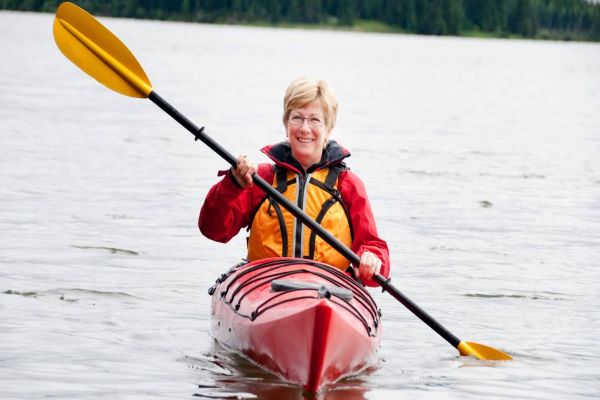Are you finding that your kayak forward stroke technique is just not quite up to par? Do you feel like you’re constantly fighting the current, rather than smoothly gliding downstream? This guide is for you!
To learn the nuances of the forward stroke and its mechanics, consider checking out paddling magazine for a deeper dive.
In a few easy steps, I’ll take you through everything you need to know about mastering the forward stroke. So, grab your kayak and let’s get started! (Note: This guide is intended for beginner whitewater kayakers.
If you’re an experienced paddler, some of these kayak forward stroke technique may be redundant or too basic for you – in which case, feel free to skip ahead!)
What is the forward stroke and why is it important

- The forward stroke is the basic paddling motion that you use to move your kayak through the water.
- It’s an important stroke because it provides the power and stability needed to navigate through whitewater rapids.
- There are a few different kayak forward stroke technique that can be used to execute the forward stroke, but all of them involve using your arms and legs in unison to create a smooth, powerful motion. If you’re just starting, REI’s kayaking guide provides an excellent foundation.
- With practice, you’ll be able to apply more pressure with your paddle for greater speed and control.
- The forward stroke is one of the most essential skills that every kayaker should learn – so practice until you get it perfect!
The basics of the forward stroke – how to properly position yourself in the kayak and use your arms, legs, and torso to generate power

When executing the forward stroke, it’s important to be in the correct position in your kayak and use your arms, legs, and torso to generate power. To achieve this, you can do the following. For an additional breakdown of these kayak forward stroke techniques, visit paddling guide.
- Leg position when paddling:
Your legs should be slightly bent, and your feet positioned flat against the foot pegs. This will give you more control over the kayak as you paddle through rapids and also help to generate more power. - Arm position when paddling:
Your shoulders should be relaxed; your arms should be bent at the elbows and your hands should grip the paddle shaft just 15 to 30 cm away from the paddle blade. Aim for the distance between your hands to be slightly greater than elbow width apart. To confirm your hands are in the correct position, try holding your paddle in front of you with both hands – your elbows should be at a 90-degree angle. - Use of your torso when paddling:
Sit up straight for the best leverage and control. Your body should align directly behind the paddle blade when it enters the water. Hips and shoulders should be squared to the paddling direction. - Paddling in unison to generate powerful forward motion and minimize fatigue:
Dip the blade of your paddle into the water at a 45-degree angle. Keep your head up and your eyes looking ahead to anticipate what’s coming and react accordingly. Power comes from torso rotation. For example, when paddling on the left side, rotate your torso toward your left, extend your right arm at shoulder height with a slight bend at the elbow, and pull your left arm back towards your chest. This process is discussed in greater detail by Epic Kayaks. Reverse the motion and repeat for the opposite side.
Tips for improving your kayak forward stroke technique and making the most of your forward stroke

- Hands should be slightly wider than elbow width apart, with elbows at a 90-degree angle.
- Keep your torso straight and aligned directly behind the paddle blade as it enters the water.
- Use your arms and legs in unison, involving your torso muscles to create powerful forward motion.
- Relax your arms and shoulders while paddling.
- Maintain a light grip on the paddle to avoid fatigue and allow natural movement.
- Adjust your position in the kayak based on the terrain (e.g., lean forward when paddling over waves).
- Practice in calm water before progressing to more challenging rapids.
Bottom line about kayak forward stroke technique
The forward stroke is an essential kayak forward stroke technique for whitewater kayakers, and with practice, you’ll master it.
Remember to keep your arms and shoulders relaxed, use your legs to generate power, and practice regularly to improve timing and rhythm.
For more advanced tips and corrections, explore NRS’ instructional guide. Soon, you’ll paddle through whitewater like a pro!
